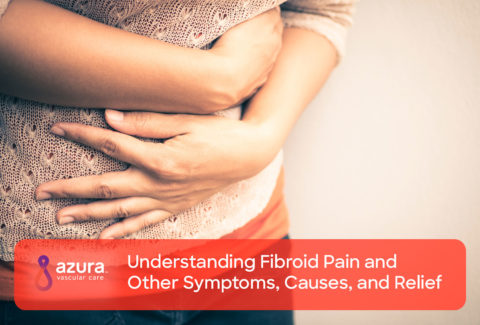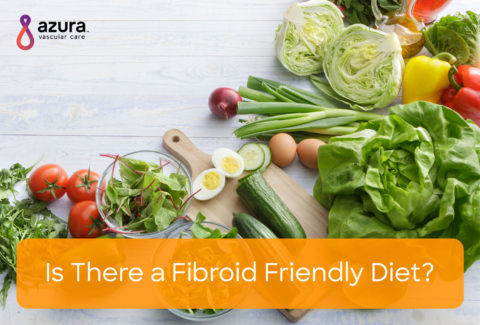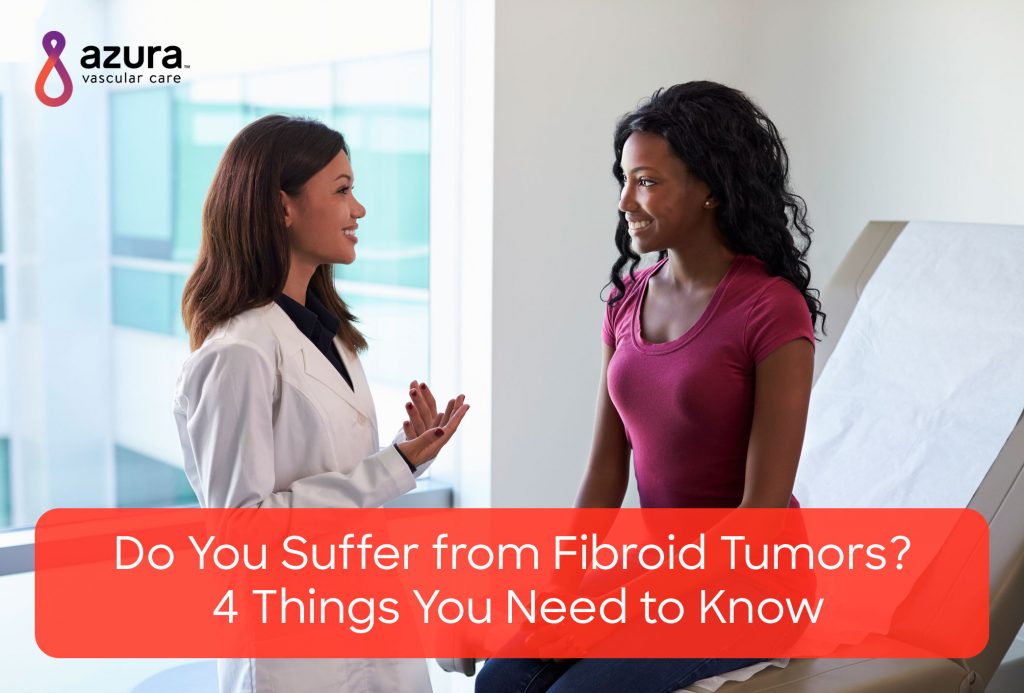
Uterine fibroids, also called leiomyomas (lie-o-my-O-muhs) or myomas, are muscular tumors that grow in the uterine wall. They are almost always benign, and are not associated with an increased risk of uterine cancer. Fibroid tumors can be large or small and can grow alone or in clusters.
If you are suffering and have been diagnosed with uterine fibroids, you should educate yourself on the:
- Types of fibroids
- Symptoms of uterine fibroids
- Risk factors
- Treatment options
4 Things You Need to Know About Fibroid Tumors
1. Types of Uterine Fibroids
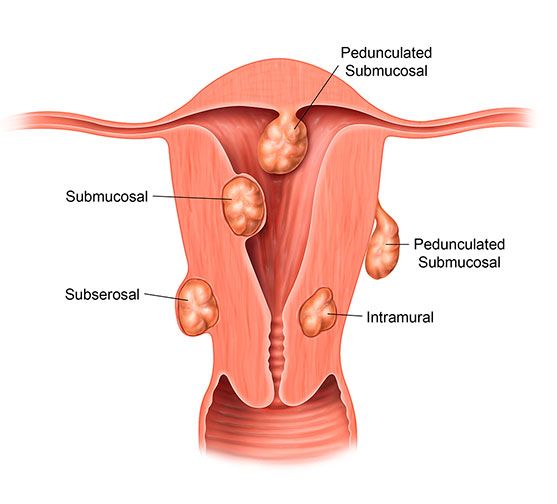
There are four types of uterine fibroids. They are named based on where they grow in the uterus.
- Submucosal fibroids – grow just underneath the uterine lining and can crowd into the uterine cavity
- Intramural fibroids – grow in the uterine wall
- Subserosal fibroids – grow on the outside wall of the uterus
- Pedunculated fibroids – grow on stems attached to either the inside or outside wall of the uterus i
2. Symptoms of Uterine Fibroids
Some women with uterine fibroids experience no symptoms. Other women experience one or more symptoms, sometimes rating their symptoms as “severe.”
Symptoms caused by uterine fibroids can include:
- Heavy menstrual bleeding
- Periods that are painful
- A bloated feeling in your pelvic region
- Lower back pain
- Painful intercourse
- More frequent urination
- Reproductive problems that may include failure to conceive and complications during pregnancy or labor i
3. Risk Factors for Developing Uterine Fibroids
Exactly what causes uterine fibroids is still unknown. However, several risk factors have been identified, explaining why some women are more likely than others to develop uterine fibroids.
- Heredity and family history – African American women and women whose mothers had fibroids are much more likely to develop them themselves
- Age – premenopausal women are more prone to developing fibroids
- A poor diet, including excessive red meat, ham and beer
- Obesity
- Vitamin D deficiency i, ii, iii
RELATED: What are the causes of uterine fibroids?
4. Treatment Options for Uterine Fibroids
Years ago, surgery, including hysterectomy – the removal of all or part of your uterus – was the only available treatment option for uterine fibroids. Today it’s far from being your only choice, and for many women, a non-surgical treatment is available.
Uterine Fibroid Embolization
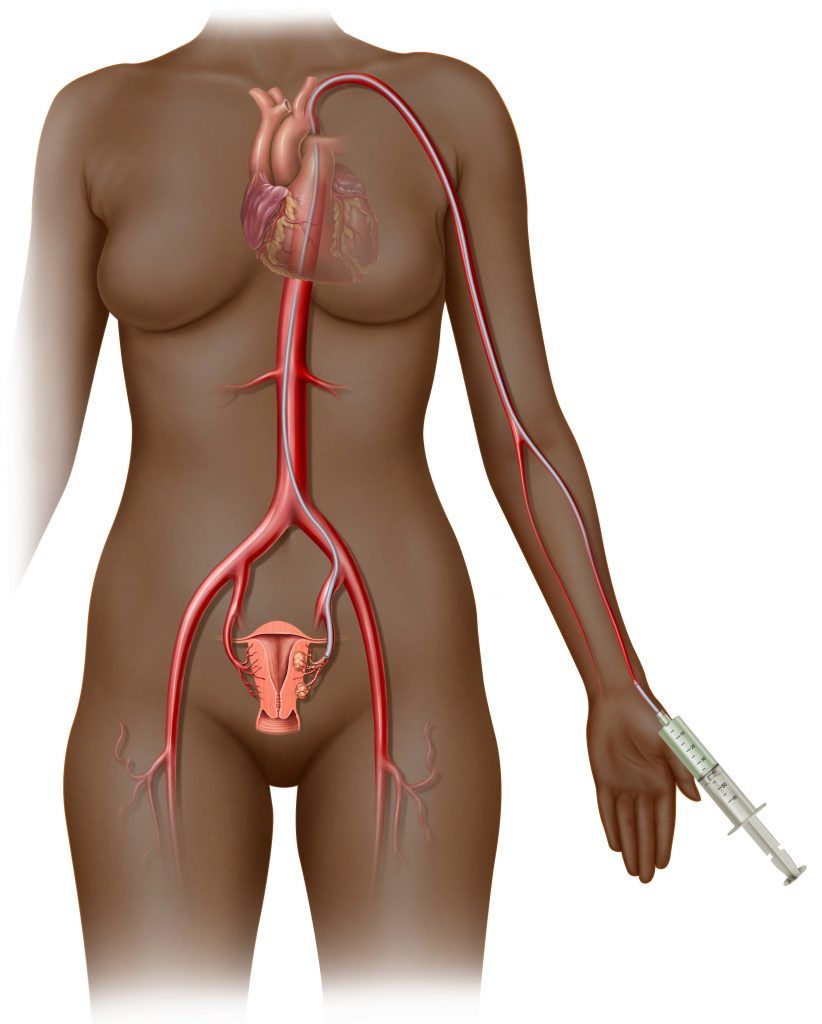
While your treatment will depend on what type, how many, how large and where your fibroid tumors are, one minimally invasive treatment option – uterine fibroid embolization (UFE) – can be used for most types and locations of fibroids, with the exception of those that are very large.
UFE is a non-surgical procedure that is usually performed by an interventional radiologist. This procedure shrinks fibroids by starving them of their blood supply. To perform the procedure, the interventional radiologist makes a tiny nick in the femoral artery near the groin, or the radial artery in the wrist. Next, a catheter is inserted into the artery and advanced to the location of the fibroid. Once the catheter is placed at the location of the fibroid a contrast dye is injected. The dye can be seen on an x-ray and is used to locate and identify the blood supply that’s feeding the fibroid.
Once the blood supply is located, tiny spheres are inserted through the catheter into the blood vessels feeding the fibroids. These spheres block the flow of blood, nutrients and oxygen to the fibroid. iv causing it to shrink and die. For women with mild or severe symptoms, UFE is a possible option in place of surgery for the treatment of fibroid tumors.
You are a good candidate for UFE if you are a woman over the age of 35, are not currently pregnant, and are experiencing symptoms such as excessive heavy bleeding, cramping, pelvic pain, bloating and frequent urination.
Remember, the more you know about uterine fibroids, the better equipped you’ll be to select the best treatment option for yourself. If you’re thinking about seeking treatment for your problematic fibroids, keep in mind that surgery is not your only option. If you prefer a non-surgical uterine fibroid treatment option that will preserve your uterus, ask your doctor about UFE.
Sources:
i U.S. Department of Health and Human Services Office on Women’s Health. Uterine fibroids fact sheet. Retrieved from: https://www.womenshealth.gov/a-z-topics/uterine-fibroids.
ii William H. Catherino, Heba M. Eltoukhi AA-H. Racial and Ethnic Differences in the Pathogenesis and Clinical Manifestations of Uterine Leiomyoma. Semin Reprod Med. 2013;31(5):370-379.
iii Wise, L.A., et al., (2011) Intake of fruit, vegetables, and carotenoids in relation to risk of uterine leiomyomata. American Journal of Clinical Nutrition 94: 1620-1631.
iv Gary P. Siskin1, Meridith Englander, Brian F. Stainken, Jiyong Ahn, Kyran Dowling and Eric G., Embolic Agents Used for Uterine Fibroid Embolization. American Journal of Roentgenology, 175 (3). Retrieved from: http://www.ajronline.org/doi/full/10.2214/ajr.175.3.1750767.
